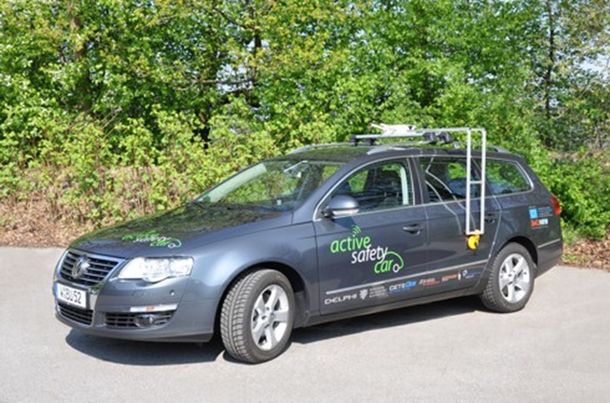Autonomous Driving & Intelligent Mobility
Unmanned Vehicles & Smart Mobility

The "Unmanned Vehicles & Smart Mobility" topic area is about the application of Machine Learning and Data Science in the context of mobility. These AI techniques can be used for sensor evaluation, environment analysis, and decision making for driving tasks of a variety of vehicles. These vehicles can be automobiles, drones, as well as specialized vehicles underground. Intelligent vehicles become intelligent mobility by linking vehicles together, as well as by linking them with infrastructure elements. An example of the latter are AGVs (Automated Guided Vehicles) in the context of Industry 4.0. With regard to the use of such systems in master's training, it is advantageous here to rely on models and simulations that are as realistic as possible. A powerful model environment for autonomous vehicles is, for example, the Audi Autonomous Driving Cup models available at the institute (see picture).
Projects

BO Autonomous Driving (2018 - today)
The aim of this in-house research project is to establish and expand the topic of Autonomous Vehicles at Bochum University of Applied Sciences (and here in particular in the training of master's degree courses). The members of AKIS have a total of 5 test vehicles (scale 1:10) of the Audi Autonomous Driving Cup, with which complex driving tasks can be carried out in suitable model environments. The model vehicles are used primarily in the appropriate university courses, as well as in final theses.
Courses in this field:
- Introduction to AI (Bachelor Computer Science)
- Computer Vision for Autonomous Driving (Master Computer Science)
Bachelor's/Master's Thesis:
- "Entwicklung einer Android Applikation zur verbesserten Nutzung und Fernsteuerung eines autonom fahrenden Elektrofahrzeugs im Maßstab 1 zu 10", Benjamin Jan Boron (Master's thesis, June 2020)
- "Entwicklung und Evaluation eines Spurhalte- und Notbremsassistenten für ein autonomes Modellauto", Tian-Chen Xu (Bachelor's thesis, February 2020)
- "Entwicklung einer Verkehrsschilderkennung für ein autonom fahrendes Elektroauto im Maßstab 1:10", Manuel Geusen (Bachelor's thesis, February 2020)
Technical papers:
- "Vision-based Detection of Road Users and Infrastructure Elements for Automated Driving", Stefan Müller-Schneiders, 20th International Conference on Research and Education in Mechatronics (REM), 2019
- "A Novel Multi-Hypothesis Tracking Framework for Lane Recognition", Kun Zhao, Mirko Meuter, Stefan Müller-Schneiders, Josef Pauli, IEEE International Conference on Information Fusion, 2014
Active Safety Car (2009 - 2012)

The aim of this project is to use cameras and radar not only to detect obstacles and forward them to the driver's own vehicle, but also to other vehicles. This process requires large computing and transmission capacities. The consortium prevailed in the NRW-EU Objective 2 competition and, with a total volume of around 3.5 million euros, will receive funding of 1.6 million euros for three years starting in 2009.
The consortium of the project is composed as follows:
- Delphi (lead management)
- Bergische University (algorithms)
- Ceteq (software and quality management)
- Maschinenbau-Kooperation-Wuppertal (camera systems, calibration, preliminary work for series production)
- Riedel (car-to-car communication and bandwidth)
- Economic Development (administration and trade fair preparation)
- Volkswagen
The AKIS member Müller-Schneiders worked as consortium leader in this project.
Publications on this project
Anselm Haselhoff; Lars Höhmann; Anton Kummert; Christian Nunn; Mirko Meuter; Stefan Müller-Schneiders, “Multi-Camera Pedestrian Detection by Means of Track-To-Track Fusion and Car2Car Communication” in: The International Conference on Computer Vision Theory and Applications (VISAPP'11) , pp. 307 – 312, March 2011.




